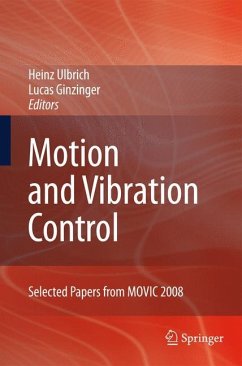
Vibration Mechanics
Linear Discrete Systems
Versandkostenfrei!
Versandfertig in 1-2 Wochen
115,99 €
inkl. MwSt.
Weitere Ausgaben:

PAYBACK Punkte
58 °P sammeln!
Objectives This book is used to teach vibratory mechanics to undergraduate engineers at the Swiss Federal Institute of Technology of Lausanne. It is a basic course, at the level of the first university degree, necessary for the proper comprehension of the following disciplines. Vibrations of continuous linear systems (beams, plates) random vibration of linear systems vibrations of non-linear systems dynamics of structures experimental methods, rheological models, etc. Effective teaching methods have been given the highest priority. Thus the book covers basic theories of vibratory mechanics in ...
Objectives This book is used to teach vibratory mechanics to undergraduate engineers at the Swiss Federal Institute of Technology of Lausanne. It is a basic course, at the level of the first university degree, necessary for the proper comprehension of the following disciplines. Vibrations of continuous linear systems (beams, plates) random vibration of linear systems vibrations of non-linear systems dynamics of structures experimental methods, rheological models, etc. Effective teaching methods have been given the highest priority. Thus the book covers basic theories of vibratory mechanics in an ap propriately rigorous and complete way, and is illustrated by nume rous applied examples. In addition to university students, it is suitable for industrial engineers who want to strengthen or complete their training. It has been written so that someone working alone should find it easy to read. pescription The subject of the book is the vibrations of linear mechanical sys tems having only a finite number of degrees of freedom (ie discrete linear systems). These can be divided into the following two catego ries : -X- systems of solids which are considered to be rigid, and which are acted upon by elastic forces and by linear resist.ive forces (viscous damping forces). deformable continuous systems which have been made discrete. In other words, systems which are replaced (approximately) by systems having only a limited number of degrees of freedom, using digital or experimental methods.












